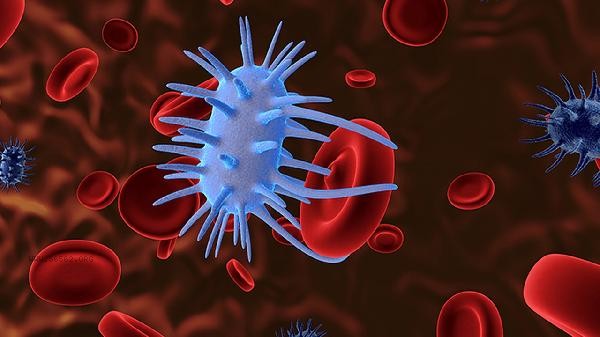The accelerated erythrocyte sedimentation rate may be caused by infectious diseases, autoimmune diseases, anemia, malignant tumors, physiological factors and other reasons. Red blood cell sedimentation rate is a non-specific indicator reflecting inflammation or tissue damage, and clinical judgment needs to be combined with other examinations.

1. infectious diseases:
Bacterial or viral infection will stimulate the body to produce inflammatory reaction, leading to the increase of acute phase proteins such as fibrinogen. These proteins encapsulate red blood cells, making them easier to aggregate, resulting in an increase in erythrocyte sedimentation rate. Commonly seen in diseases such as pneumonia, urinary tract infections, tuberculosis, etc., infection sources need to be controlled through antibiotic or antiviral treatment.
2. Autoimmune diseases:
Rheumatoid arthritis, systemic lupus erythematosus, and other diseases can produce a large number of immune complexes and inflammatory factors, altering plasma protein composition. Abnormal elevation of immunoglobulin can increase the bridging effect between red blood cells, usually accompanied by symptoms such as joint swelling and pain, rash, etc. Immunosuppressants need to be used for intervention.
3. Anemic state: When hemoglobin concentration decreases, the decrease in red blood cell count will weaken suspension stability. In diseases such as iron deficiency anemia and hemolytic anemia, changes in red blood cell morphology can also affect sedimentation rate. Patients often experience fatigue and pale complexion, and it is necessary to supplement iron supplements or vitamin B12 according to the type of anemia.

4. Malignant tumors:
Cytokines secreted by tumor cells can alter the rheological properties of blood. Hematological tumors such as lymphoma and multiple myeloma can directly affect plasma proteins. This type of abnormal settlement often continues to progress and requires diagnosis through pathological biopsy before chemotherapy or targeted therapy can be administered.
5. Physiological factors:
Physiological states such as menstrual period and mid to late pregnancy can cause a natural increase in plasma fibrinogen. Elderly individuals with vascular sclerosis and changes in female estrogen levels may also experience mild acceleration, which usually does not require special treatment. It is recommended to regularly monitor changes through follow-up examinations. When abnormal elevation of erythrocyte sedimentation rate is found, it is recommended to complete complementary examinations such as C-reactive protein, blood routine, immunoglobulin, etc. Pay attention to daily observation for accompanying symptoms such as fever and weight loss, and avoid vigorous exercise that may affect the test results. Maintaining a balanced diet can help improve anemia, and supplementing high-quality protein and vitamin C in moderation can assist in regulating immune function. It is recommended to review the dynamic changes of erythrocyte sedimentation rate every 3-6 months. If there are persistent abnormalities, further investigation of the cause is necessary.









Comments (0)
Leave a Comment
No comments yet
Be the first to share your thoughts!